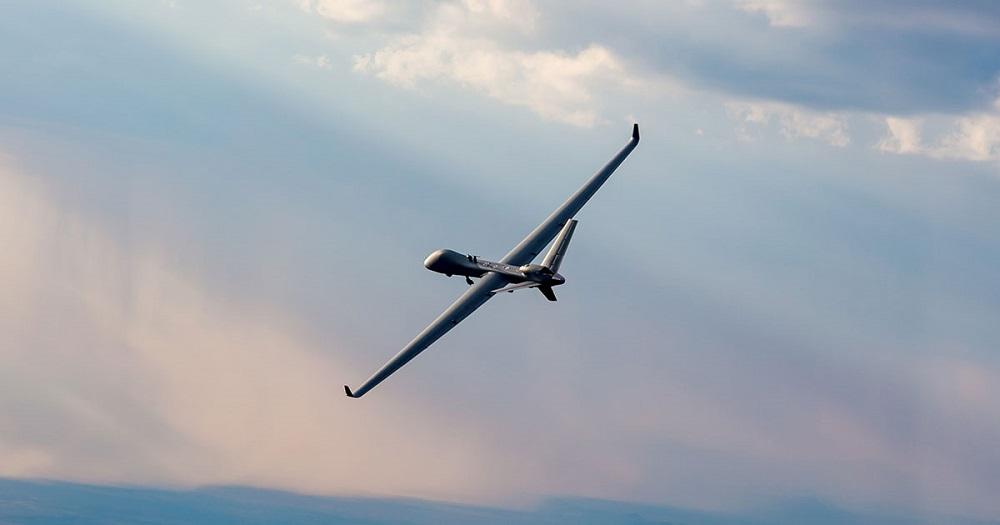General Atomics Aeronautical Systems, Inc. (GA-ASI) and Hindustan Aeronautics Limited (HAL) have jointly announced that turbo-propeller engines, which power GA-ASI’s state-of-art MQ-9B Remotely Piloted Aircraft System (RPAS), will be supported by the HAL Engine Division at Bengaluru for the Indian market. Though the turboprop engine fitted onboard the MQ-9B RPAS looks similar to other commercial engines in its category, it is unique in its configuration and operation, requiring special training and equipment to maintain, repair and overhaul. The Expression of Interest was exchanged in presence of Mr. C B Ananthakrishnan, Chairman and Managing Director, HAL and Mr. Mihir Kanti Mishra, CEO (Bangalore Complex), between Dr. Vivek Lall, Chief Executive, General Atomics Global Corporation and Mr. B. Krishna Kumar, Executive Director (Engines & IMGT).
“HAL has been manufacturing and providing MRO support for TPE 331-5 engines for the last 40 years. We are also establishing facilities for manufacturing TPE 331-12B engines for HTT-40 project. The engine used on the MQ-9B RPAS belongs to the same family of engines with upgraded configuration to adapt to the RPAS technology. I am glad that HAL Engine Division, Bangalore would be providing MRO support to the engine for MQ-9B RPAS, one of the most sophisticated equipment in the world,” said Mr. C B Ananthakrishnan, Chairman and Managing Director, HAL.
“GA-ASI is proud to collaborate with HAL on this prestigious project,” said Dr. Vivek Lall, Chief Executive, General Atomics Global Corporation. “HAL is the foremost Indian public sector Aerospace and Defence agency, and its vast experience in the domain of aero-engine technology makes it our natural partner in India.”
Hindustan Aeronautics Limited (HAL) is an Indian state-owned aerospace and defence company, headquartered in Bangalore. Established on 23 December 1940, HAL is one of the oldest and largest aerospace and defence manufacturers in the world. HAL began aircraft manufacturing as early as 1942 with licensed production of Harlow PC-5, Curtiss P-36 Hawk and Vultee A-31 Vengeance for the Indian Air Force. HAL currently has 11 dedicated Research and development (R&D) centers and 21 manufacturing divisions under 4 production units spread across India. HAL is managed by a Board of Directors appointed by the President of India through the Ministry of Defence, Government of India. HAL is currently involved in designing and manufacturing of fighter jets, helicopters, jet engine and marine gas turbine engine, avionics, software development, spares supply, overhauling and upgrading of Indian military aircraft.
GA-ASI and HAL eagerly look forward to formulating a comprehensive engine Maintenance Repair and Operations (MRO) program for upcoming RPAS projects. This joint collaboration echoes India’s clarion call for ‘Atmanirbhar’ or ‘Self-Reliance’, while underscoring the deep industrial connection between U.S. and Indian Aerospace Companies. General Atomics Aeronautical Systems, Inc. (GA-ASI), an affiliate of General Atomics, is a leading designer and manufacturer of proven, reliable Remotely Piloted Aircraft (RPA) systems, radars, and electro-optic and related mission systems, including the Predator® RPA series and the Lynx® Multi-mode Radar. With more than seven million flight hours, GA-ASI provides long-endurance, mission-capable aircraft with integrated sensor and data link systems required to deliver persistent flight that enables situational awareness and rapid strike. The company also produces a variety of ground control stations and sensor control/image analysis software, offers pilot training and support services, and develops meta-material antennas.















